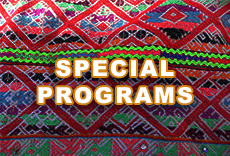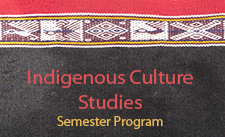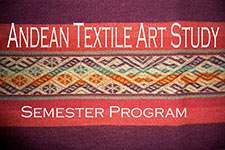ECOSOPHY AND ANDEAN RELIGION: COURSES AND SEMINARS

The Universe or “Pacha”, as a “Live Organism”
We call “ecosophy” the Andean wisdom that encompasses and integrates, as much the economic, as ecological aspects, in the perspective of which, the Universe “Pacha” is a live organism, of a sacred category, that functions thanks to the multiple relations and articulations that constitute it.
General Learning Goals:
- Ecology, from the Andean indigenous perspective
- Concept of agriculture, as “growing life”, in a sort of interaction and dialog with nature
- Experiencing “work”, in its ritual and celebrative context
- A religious system based on the Cosmos and Nature
THE CONTENT´S MODULES
THE AGROCENTRIC ANDEAN CULTURE – AGRICULTURE AS “GROWING LIFE” AND ECOLOGY
 The Andean culture holds agriculture and shepherding, as well as the cohabitation with the Cosmos (Pacha) and its components, as its foundations. This module includes the approach of agriculture and ecology, in the Andean vision: The Andean culture holds agriculture and shepherding, as well as the cohabitation with the Cosmos (Pacha) and its components, as its foundations. This module includes the approach of agriculture and ecology, in the Andean vision:
- Agricultural and Livestock-Raising Ritual Calendar: In the Andean perspective, considering agriculture as “growing life”, in the crop field (Chacra), we will see that sowing, reproduction and harvest, as well as the storing, conservation and consumption of food products is accompanied by rites and ceremonies. Likewise, animal breeding is subject to a ritual calendar, set according to celestial bodies, constellations, the solstices and equinoxes.
- Agricultural Astronomy and the Dialog with the Cosmos (Pacha), by means of Signs and Signaling Factors: The Andean people observe the Milky Way, constellations and lunar phases, as well as the equinoxes and solstices, as they include them in their agricultural cycle. Likewise, the Cosmos (Pacha) manifests itself, transmitting climatological and meteorological information, through atmospheric behaviors, as well as through those of plants, animals, insects and celestial bodies, along with information proceeding from the Underworld (Ukhu Pacha).
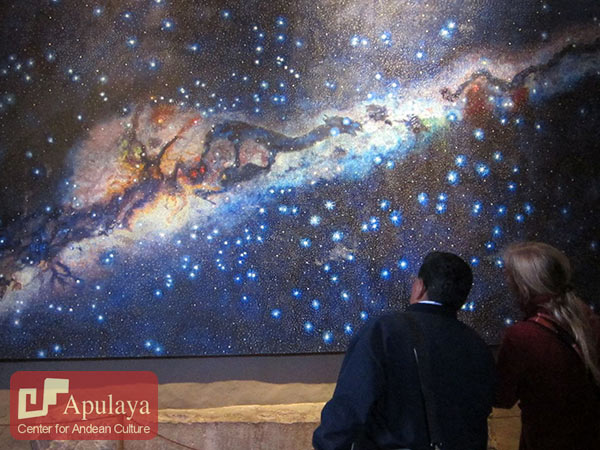 Plants and Animals are Animated Beings (Kamaqe): Potatoes, corn and other agricultural products are “live” beings, in the same way as the animals that also possess a double that animates them. To understand this principle, we will approach the concept of essence in action, that animates (kamaqe), and the definition of the species´ archetypes (enqa, enqaychu). Plants and Animals are Animated Beings (Kamaqe): Potatoes, corn and other agricultural products are “live” beings, in the same way as the animals that also possess a double that animates them. To understand this principle, we will approach the concept of essence in action, that animates (kamaqe), and the definition of the species´ archetypes (enqa, enqaychu).
Field Experiences:
- Participation and observation, in the different stages of agricultural crops, according to the season of the agricultural year
- Observation of signs and signaling factors
- Participation and/or observation of ritual ceremonies, associated to agriculture or raising animals
- Visit to and/or stay at indigenous communities
|
THE COSMOS´ BINARY STRUCTURE -THE ANDEAN WORLD´S ORGANIZATION MODEL
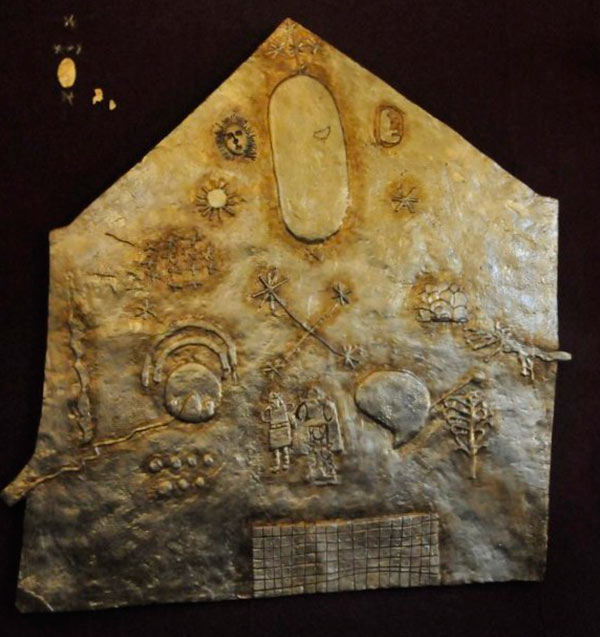 The Andean world´s organization and its classification system stand on the principles of Hanan (Upper) and Urin (Lower), aspects that will be explained in this module: The Andean world´s organization and its classification system stand on the principles of Hanan (Upper) and Urin (Lower), aspects that will be explained in this module:
- Duality´s Symbolism (Hanan / Urin), Cuatri-partition and Tri-partition: We will examine these principles, in relation to time, space and society, as well as their applications in social and political organization, art and religion, in pre-Hispanic times, and today, in the High-Andean communities.
- Reciprocity (Ayni), as Regulating Principle, and its Ethical Dimension: Reciprocity, as the expression of relationship and correspondence, is a regulating principle of order. This axiom´s focus includes its function in pre-Hispanic times, as well as its application, on a social and economic level, in today´s agricultural and shepherding communities, and in their dimension of cosmic ethics.
- Conception of Time: In contraposition with the lineal and progressive notion of time, in Andean culture, the definition of time is cyclical. This analysis includes the astronomic, meteorological, agricultural and vital rhythms that define the conception of time, in the Andes.
|
ANDEAN MYTHOLOGY – THE ANDEAN WORLD´S ORDER, THROUGH MYTHS
From the myths´ analysis, participants will familiarize with the Andean world´s order. Pre-Hispanic and contemporaneous myths will be analyzed in relation with the Andean culture´s genesis, Apu (the mountains in their sacred aspect), Pacha Mama (“Mother Earth”), agriculture, food products and scatology (end and beginning of an era), among others.
|
ANDEAN RELIGION AND SPIRITUALITY
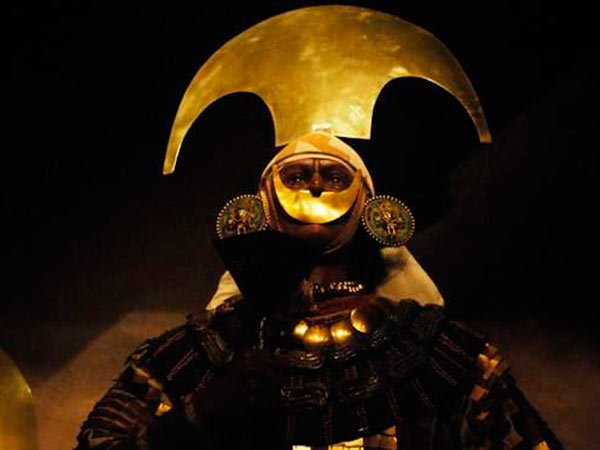 This module´s goal is to introduce participants to the Andean religious system. Its content´s development will base itself on the Andean religion´s following characteristics: The immanence and cosmo-centrism, the principle of sexed complementarity and methodic pluralism. This module´s goal is to introduce participants to the Andean religious system. Its content´s development will base itself on the Andean religion´s following characteristics: The immanence and cosmo-centrism, the principle of sexed complementarity and methodic pluralism.
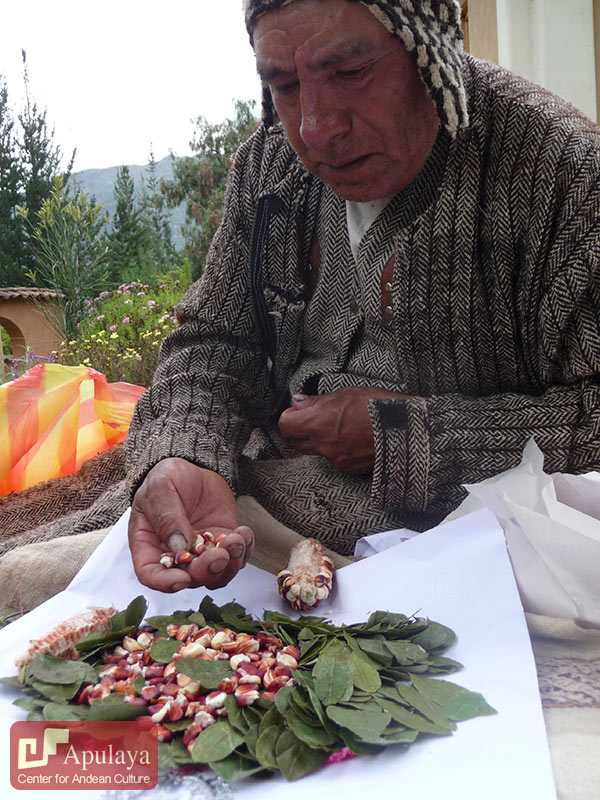 Religion and Pre-Hispanic Time: Archaeology and ethno-history, along with other disciplines, provide very good approximations about the pre-Hispanic religious system. We will approach the Moche ceremonial calendar, as well as religious aspects of other pre-Incan civilizations, together with the Incan system and ideology. Religion and Pre-Hispanic Time: Archaeology and ethno-history, along with other disciplines, provide very good approximations about the pre-Hispanic religious system. We will approach the Moche ceremonial calendar, as well as religious aspects of other pre-Incan civilizations, together with the Incan system and ideology.
- The Andean Religion, Today: Pilgrimages, myths, rites, sacrifices and symbols will be explained in this topic, taking, as references, the main categories, the Apu (the mountains in their sacred aspect), and their counterpart; the Pacha Mama (Mother Earth), and then, the implications of the whole Cosmos (Pacha) and its components.
- The Wisa: Priests or Specialists of the Andean Liturgy: The wisa o “misayoq” are specialists who master the liturgical content, in accordance with their category. Among the main hierarchies, there are the High Wisa (Alto Misayoq) and the Paqo or Pampa Wisa (Pampa Misayoq).
|
-
-
-
For questions or more information just write us.
|










